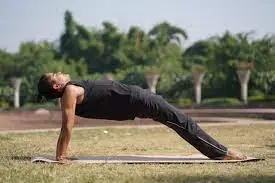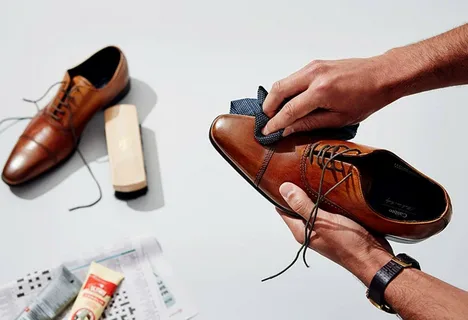
Building bigger forearms is a crucial aspect of achieving a well-rounded and balanced physique. Often overlooked, strong and well-developed forearms contribute not only to functional strength but also play a significant role in enhancing overall fitness and aesthetics. These muscles are essential for numerous everyday activities and can provide a polished appearance to your arms. In this exploration, we’ll delve into the significance of building bigger forearms and how their development can complement your fitness goals and overall physical appearance.
Importance of Strong Forearms:
Having strong forearms is of paramount importance for several reasons, extending beyond just aesthetic appeal. These often-underappreciated muscles play a crucial role in overall fitness, functional strength, and daily activities. Here’s why strong forearms are significant:
- Enhanced Grip Strength: Forearm muscles are responsible for hand and finger movements. Developing these muscles leads to improved grip strength, which is essential for various activities like lifting weights, carrying groceries, and even basic tasks like opening jars or doors.
- Functional Fitness: Strong forearms contribute to overall functional fitness. They assist in stabilizing your wrists and arms during exercises, making movements more controlled and efficient. This is vital for activities ranging from weightlifting and yoga to sports and manual labor.
- Injury Prevention: Well-developed forearms can provide stability and support to your wrists and elbows, reducing the risk of strains and injuries during exercises or daily tasks that involve repetitive motions.
- Balanced Muscle Development: Achieving a balanced physique involves not just focusing on major muscle groups but also on smaller ones like the forearms. Balanced muscle development enhances posture and helps prevent muscle imbalances that can lead to discomfort and injury.
- Aesthetics: Bigger forearms contribute to the overall visual appeal of your arms. When your forearm muscles are well-defined, they provide a polished and muscular appearance to your arms, enhancing your overall physique.
- Improved Athletic Performance: Many sports, from rock climbing to martial arts, heavily rely on forearm strength. Strong forearms can give you an advantage in these activities by providing better control and endurance.
- Daily Activities: From typing on a keyboard to carrying heavy objects, forearms play a role in numerous everyday tasks. Strengthening them can make these activities more comfortable and efficient.
- Bone Health: Engaging in weight-bearing exercises for the forearms can contribute to bone health and density, reducing the risk of conditions like osteoporosis.
Table of Contents
Effective Forearm Exercises:
Here are some key forearm exercises to consider:
- Wrist Curls (Flexor and Extensor Variations):
- Flexor Wrist Curls: Hold a dumbbell with an underhand grip and rest your forearm on a bench or your thigh. Let your wrist hang off the edge and slowly curl the weight up toward your forearm while keeping your forearm stationary.
- Extensor Wrist Curls: Similar to flexor curls, but use an overhand grip instead. Rest your forearm on a surface, with your palm facing down, and curl the weight upwards.
- Farmer’s Walk:
Hold a heavy dumbbell or kettlebell in each hand and walk for a certain distance or time. This exercise not only works your forearms but also engages your entire body for functional strength.
- Plate Pinch Holds:
Hold two weight plates together, smooth sides out, between your fingers and thumb. Lift them off the ground and hold for a set time. This exercise targets both your pinch grip and forearm muscles.
- Reverse Curls:
Hold a barbell with a pronated grip (palms facing down) and curl it towards your forearms. This targets the brachioradialis muscle in the forearm.
- Grip Strengtheners:
Using grip strengtheners or stress balls can help increase your grip strength over time. Squeezing these tools can be done throughout the day.
- Rope Climbing:
Climbing ropes requires strong grip and forearm strength. If you have access to a rope, incorporating rope climbing into your routine can be an excellent forearm workout.
- Flexed Arm Hang:
Using a pull-up bar, hang from it with your palms facing you and your arms flexed at a 90-degree angle. Hold the position for as long as you can to engage the forearm muscles.
Nutrition and Hydration:
- Protein Intake:
- Protein is essential for muscle repair and growth. Consume lean sources of protein like chicken, turkey, lean beef, fish, eggs, dairy products, and plant-based sources such as beans and lentils.
- Aim for a balanced protein intake throughout the day to provide your muscles with a steady supply of amino acids.
- Caloric Surplus:
- To build muscle, you need to consume more calories than your body burns. This creates a caloric surplus that provides the energy necessary for muscle growth.
- Focus on whole, nutrient-dense foods to support your increased calorie intake.
- Carbohydrates for Energy:
- Carbohydrates provide energy for your workouts and aid in recovery. Choose complex carbohydrates like whole grains, fruits, vegetables, and legumes.
- Timing carbohydrates around your workouts can help fuel your training and replenish glycogen stores.
- Healthy Fats:
Incorporate sources of healthy fats such as avocados, nuts, seeds, olive oil, and fatty fish. Fats are important for hormone production and overall health.
- Micronutrients:
Vitamins and minerals are vital for muscle function, recovery, and overall health. Include a variety of colorful fruits and vegetables in your diet to ensure you’re getting a range of micronutrients.
- Hydration:
- Proper hydration is essential for muscle function and recovery. Dehydration can impair your performance and hinder muscle growth.
- Drink water throughout the day and consider your individual needs based on activity level and climate.
- Post-Workout Nutrition:
Consuming a combination of protein and carbohydrates after your workouts can aid in muscle recovery and replenish glycogen stores.
- Meal Timing:
- Spread your protein intake evenly across meals to provide a consistent supply of amino acids for muscle growth.
- Consider having a balanced meal containing protein, carbs, and fats within a couple of hours after your workout.
- Supplements:
While whole foods should be your primary source of nutrients, supplements like protein powder, creatine, and omega-3 fatty acids can support your nutrition plan.
- Consult a Registered Dietitian:
If you have specific dietary needs or goals, consulting a registered dietitian can provide personalized guidance tailored to your individual requirements.
Avoiding Common Mistakes:
Here are some tips to help you maximize your forearm development effectively:
- Neglecting Form and Technique:
- Proper form is essential to target the forearm muscles effectively and prevent injury.
- Focus on controlled, deliberate movements during exercises to ensure that you’re engaging the right muscles.
- Skipping Warm-Up:
Warm up your forearms and wrists before starting your workout. Perform light stretches and wrist movements to improve blood flow and flexibility.
- Overtraining:
- While working hard is important, overtraining can lead to burnout and injuries.
- Allow sufficient rest between forearm-focused workouts to ensure proper recovery.
- Not Prioritizing Nutrition:
- Neglecting proper nutrition can hinder muscle growth.
- Consume adequate protein, carbs, and healthy fats to fuel your workouts and support recovery.
- Neglecting Grip Variation:
Incorporate exercises that utilize different grips (overhand, underhand, neutral) to engage various parts of the forearms.
- Using Excessive Weight:
- While progressive overload is important, using too much weight can compromise your form and increase the risk of injury.
- Gradually increase weight while maintaining proper technique.
- Improper Recovery:
- Ensure you’re getting enough sleep and allowing your muscles to recover between workouts.
- Proper sleep and rest are crucial for muscle repair and growth.
- Not Listening to Your Body:
Pay attention to your body’s signals. If you feel pain or discomfort, stop the exercise and reassess your form or weight selection.
- Ignoring Forearm Stretching:
Stretching your forearm muscles after workouts can help maintain flexibility and prevent tightness.
Monitoring Progress:
Here’s how to effectively monitor your forearm development:
- Keep a Workout Journal:
Record your forearm workouts, including exercises, sets, reps, and weights used. This allows you to track your progress over time.
- Measurements and Photos:
- Take measurements of your forearms using a tape measure. This provides a tangible way to track size changes.
- Take regular photos to visually assess your progress. Compare photos taken at different intervals to observe changes in muscle definition and size.
- Body Composition Changes:
- Observe how your forearm muscles contribute to your overall arm aesthetics.
- Note changes in muscle definition and vascularity in your forearms.
- Regular Assessments:
- Schedule regular assessments, perhaps every 4-6 weeks, to evaluate your progress objectively.
- Compare current measurements, photos, and strength levels to your baseline.
- Adjustments and Adaptations:
- Based on your progress, adjust your training plan by increasing weights, changing exercises, or altering rep ranges.
- Adapt your nutrition and recovery strategies if needed.
- Celebrate Milestones:
- Celebrate your achievements, whether it’s lifting heavier weights or noticing increased forearm size.
- Positive reinforcement boosts motivation and commitment.
- Consult a Professional:
If you’re unsure how to interpret your progress or need expert guidance, consider consulting a fitness professional or personal trainer.
Conclusion:
The process of getting bigger forearms is just as important as the final result. You’re creating the groundwork for growth by performing focused exercises, progressively pushing your muscles, and nourishing your body with diet and rest. Keep in mind that consistency is essential, and with each sincere attempt, you’re shaping not only your forearms but also your dedication to personal development. As your efforts result in stronger, more substantial forearms, have faith in the process, be persistent, and enjoy the sense of success.






